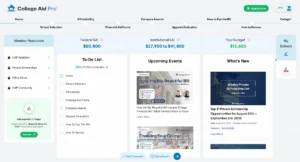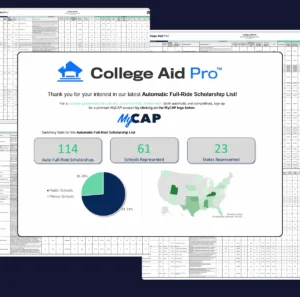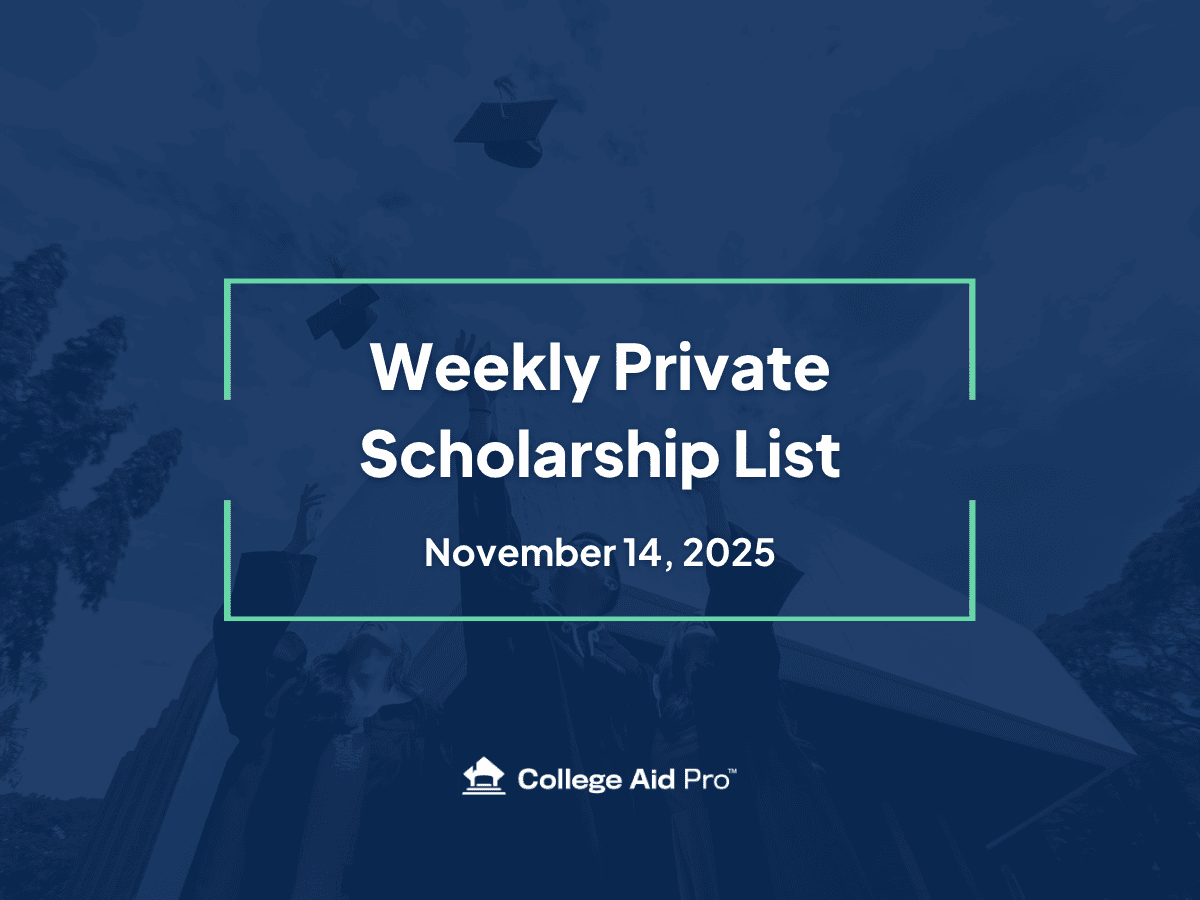
The Shocking Competition for True Full Ride Scholarships
I was listening to a financial call-in program the other day and the topic of how a mom was going to pay for her kid’s college came up. She said, “I’m hoping she will get a scholarship.” That was it. She had no money saved, her daughter was in high school and she was counting on a scholarship. I inferred that she meant a “full-ride scholarship” since it didn’t sound like she had any room in her budget to be paying for college through cash flow.
At first, I laughed as I thought about how unrealistic this was, but I know how easy it might be to get sucked into believing that. The conversation didn’t go into any specifics about her children, like test scores or grades. Maybe the girl was a genius, I don’t know, but I remembered my own delusion.
While I never thought my oldest daughter was going to get a full ride for four years of college, I did think she was special because she had a great GPA and a 30+ ACT as well as lots of volunteer hours and extra-curricular activities. Early on in my college search, I was sure this would get her lots of merit scholarship offers. After I started reading articles and posts online, I found out lots of other students had statistics that were at least as impressive as hers, and there were also the National Merit Finalists. I started thinking, wow, there is going to be a lot of competition for these scholarships! This proved to be true.
At one school, my daughter was invited to compete, along with almost 400 other high-flying students, for 20 scholarships ranging from three-quarters of the tuition cost to full tuition plus room and board. She was not one of the 20 winners and, in this case, she was relieved because she really didn’t want to go to that school anyway.
A true “full ride” scholarship consists of tuition plus room and board. Some even go further and throw in books, transportation costs, spending money, an internship, and more. More prevalent would be the “full tuition” scholarships.
What Type of Full Ride Scholarships Exist?
So how many true four-year full ride scholarships are out there? In my research, I found 4 types of full ride scholarships:
- Automatic or semi-automatic full ride provided by the college based on ACT/SAT score and GPA – we have 14 schools in our database that offer this.
- Automatic full ride scholarships provided by the college for being a national merit finalist or semi-finalist – we have 33 schools in our database that offer this.
- Competitive full ride provided by the college (either students come to the school for a special competition or the admissions office selects students to receive these based on their application materials) – we have 214 schools in our database that offer this. Some require national merit finalist or semi-finalist status to compete, some require certain GPA and ACT/SAT scores, some require a separate application with an essay, and others pre-qualify students with grades and test scores, but require them to interview and/or write an essay for the final selection.
- Private full ride scholarships provided through a corporate or foundational scholarship program – There are at least four well-known in this category: Stamps Foundation, Gates Millenium Scholarship, Chick Evans Caddie Scholarships and QuestBridge National College Match.
Of the schools that used ACT/SAT scores as a determining factor for a scholarship or a competition, 32 was the most common low-end score accepted. Some lesser-known state schools will accept below this. Several Alabama state schools offer full tuition down to a 28 ACT.
INSTANT ACCESS: Unlock 150+ Automatic Full Tuition Scholarships!
Get Wendy Nelson’s curated list of over 150 Automatic Full Tuition Scholarships from 70 schools across 27 states to boost your college funding now!
Does your child not qualify or meet anything on this list? That’s okay! There are still plenty of ways to help them pay for college without being awarded a full ride scholarship.
How to Prepare for College Tuition Without a Full Ride Scholarship
Although, I’m not completely ruling out the fact that your child could win a full-ride, I’m merely trying to set your expectations accordingly. If your child doesn’t qualify for one of the four types of full ride scholarships, you do still have options! Here are my best tips to help your student pay for college:
1. Start Early and Save with a 529 Plan
I know this isn’t always an option, especially if you’re reading this article with a high school junior or senior. But if you have younger children, a great way to help prepare for the cost of tuition is a 529 or other kind of savings plan. 529 plans can only be used for school-related expenses (tuition, books, room & board, etc), but they funds in the account will never be taxed, even when withdrawn and used for your child’s schooling.
Learn more: Research and Compare 529 Plans
2. Apply for Financial Aid
I know financial aid is confusing and cumbersome, but it truly is one of the most effective ways to save potentially thousands on your student’s final bill. Between grants, school-awarded scholarships, and other funds, there’s no better way to help pay for college and get an education debt-free.
3. Check Smaller Universities
The really great automatic scholarships are not coming from colleges near the top of any “best colleges” ranking lists. They are coming from schools that desperately want to attract top students to their campuses.
The good news is that exploring smaller schools that are lesser known doesn’t necessarily mean sacrificing the quality of education! In fact, many smaller colleges provide a much more engaging student experience with smaller class sizes, and more opportunities for support both during college and beyond when your student’s career search begins.
4. Don’t Dismiss Smaller Scholarships
Overlooking smaller private scholarships in hopes of a full ride could prove to have your student missing out on thousands. Those big ticket, full ride scholarships are extremely competitive, like we’ve mentioned. And although I’m not discouraging your student from applying to them, I want to make sure we have our expectations very clear that they likely will not receive one. The chances of winning smaller private scholarships, especially major-specific or locally sourced, are significantly greater.
Unsure of where to start with finding the right scholarships for your student? I go into more detail on that below.
Navigating The Scholarship Landscape
If you’re looking for full ride scholarships or putting together a group of smaller private scholarships to help your child fund the cost of college, MyCAP can help.
Leverage our unique database to search for scholarships that meet your student’s unique criteria to cut your search time in half! What’s more, you and your college-bound student can look at what schools are out there that have an estimated cost of attendance (and an estimated expected family contribution) that fits into your budget. Our database can help you explore schools nationwide — some that you may never have even heard of or considered before!





